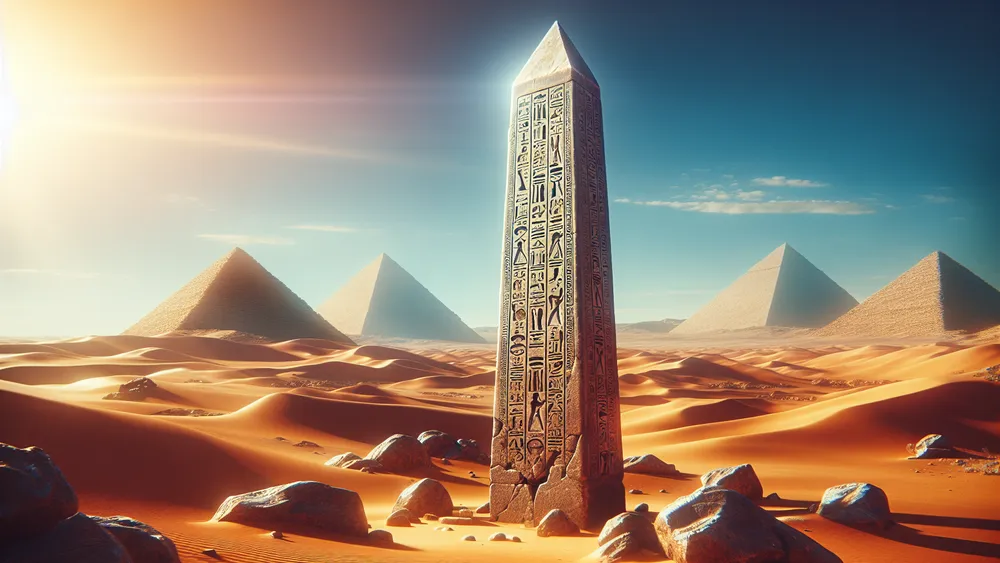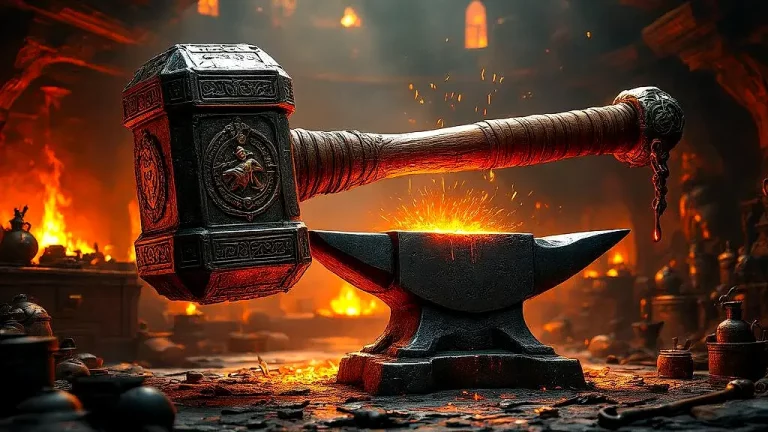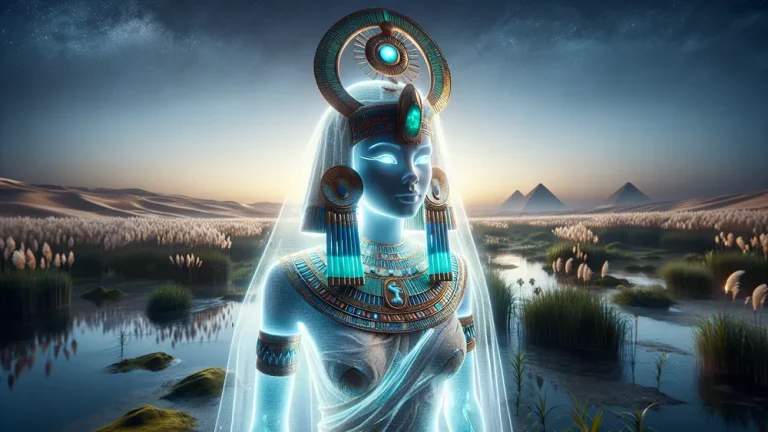Obelisk: Ancient Egyptian Monument and Symbolism
Picture yourself walking in the busy streets of an old Egyptian place, and right away, you see a big stone thing going up to the clouds. This thing is an obelisk, amazing from old building skills and something really important for cultural and religious reasons.
Key Points:
- Obelisks were ancient Egyptian monuments made from granite to honor gods and remember events.
- They symbolized a connection between earth and the divine, mainly dedicated to the sun god Ra.
- Obelisks were crafted with great skill using copper tools and sand to achieve perfect symmetry.
- Transport of obelisks required manual labor, sledges, and clever engineering to move and set them up.
- Famous obelisks include ones in Karnak and Luxor temples in Egypt, as well as those in Rome like the Vatican Obelisk.
- Obelisks exist worldwide today, such as Cleopatra’s Needle in London and the Washington Monument in the USA, connecting cultures and times.
Started in ancient Egypt around like 4,000 years ago, these obelisks were tall stones, and sometimes only from one huge granite rock, put up to show respect to gods and remember big happenings. Kind of like how the Eiffel Tower means Paris now, these obelisks were strong symbols in old Egypt times.
At the doors of temples, mostly, they stood as guards and noted important areas. Now, we will look into the cool world of obelisks, seeing where they came from, how they were built, and the deep meanings they held for folks in ancient Egypt.
Obelisk: Overview and Key Facts
| Main Point | Explanation |
|---|---|
| Meaning | A thin, four-sided, tall piece which gets smaller to end in a pointed top. |
| Start Place | Very old Egypt, about 4,000 years back in the Old Kingdom time. |
| Material Used | Mostly from granite, usually dug up from Aswan in Egypt’s south. |
| Why They Made Them | Used for religious and memory reasons, often for the sun god Ra. |
| Common Locations | Normally put at temple gates and special areas. |
| Famous Leaders | Built by rulers like King Thutmose III and Queen Hatshepsut. |
| What They Meant | Stood for a sunlight beam, showing a link between earth and the gods. |
| How They Built Them | Needed clever work in digging, shaping, and moving rocks. |
| Spread Around The World | Many obelisks moved to Rome and elsewhere, becoming important signs in new lands. |
| Today’s Famous Ones | Well-known obelisks now are Cleopatra’s Needle in London and the Washington Monument in the USA. |
| Keeping Them Safe | New efforts to care for and maintain these old stones are crucial. |
How Obelisks Got Their Start
To really see where these amazing structures began, it’s necessary to look at the old days of Egypt and check out the leaders who first thought of them. Starting from the Old Kingdom period, we will explore how obelisks came into being.
Early Days in Ancient Egypt
The journey of obelisks starts in the Old Kingdom of Egypt, about 4,000 years ago, when these tall structures first appeared as big cultural and religious icons. Think about the old Egyptians, like today’s builders, starting bold projects to make landmarks last forever. Important rulers like King Thutmose III and Queen Hatshepsut played big roles in ordering these grand objects. To honor gods and mark their time in power, these leaders used obelisks. For instance, Queen Hatshepsut – one of the few female pharaohs – had several obelisks made to show her right to lead and honor the sun god Ra. Below are some vital points about these early times:
- King Thutmose III: Known for his military wins and many building projects, he had obelisks made to celebrate his wins and show respect to gods.
- Queen Hatshepsut: Had obelisks made to confirm her rule and pay respect to the sun god Ra, with some of her obelisks still standing now at Karnak Temple.
These early actions set the stage for the lasting importance of obelisks in old Egyptian culture.

Obelisks in ancient Egypt symbolized power, honoring gods, and marking rulers’ legacies, like those of King Thutmose III and Queen Hatshepsut, laying the foundation for their cultural significance.
What They Represent and Why They Matter
In old Egyptian culture, obelisks were more than just big stone things; they had deep religious and cultural meaning. Think of them like big modern monuments such as the Statue of Liberty or the Eiffel Tower, which mean freedom and national pride. Obelisks, mainly dedicated to the sun god Ra, worked as rays of sunlight and showed the link between earth and the divine. These tall pillars were placed near temple doors, marking important places that honored gods and remembered big events. For old Egyptians, the obelisk was a strong sign of stability, ongoing life, and divine support. Some key points about their meaning and location:
- Religious Symbolism: Showed the sun god Ra and the link between earth and divine.
- Cultural Importance: Worked as signs of stability and ongoing life in society.
- Temple Entrances: Placed at temple doors to honor gods and mark important events, acting like guards of sacred areas.
These details explain why obelisks were so respected and why they still fascinate us today.
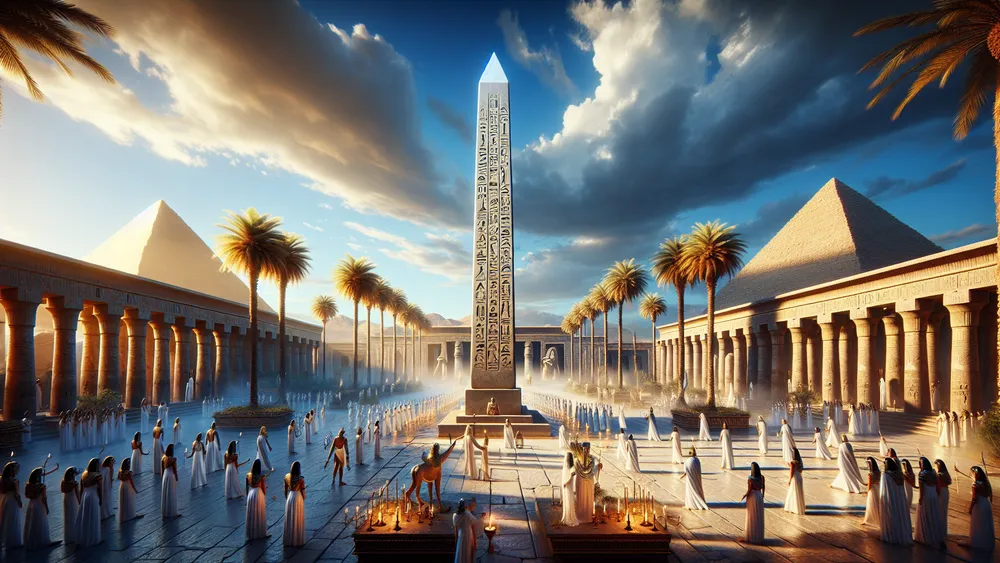
How They Were Made
Now that we see why they mattered, let’s look at the interesting steps in making these huge obelisks, from picking the right stone all the way to setting them up.
Picking and Getting the Right Stone
The start of making obelisks was about choosing the right materials, like granite, which was liked for being strong and looking good. Think about old Egyptians starting an adventure like digging mines today, but they did it without our modern machines. They got granite from places, especially in Aswan, known for having really good stone. Getting the stone out needed skilled workers, who used tools such as copper chisels, wooden wedges, and stone hammers to break off big chunks of granite. This was hard work. They had to be very careful and use a lot of muscle to make sure the stone had no cracks. Below is a table showing the main materials and ways they used:
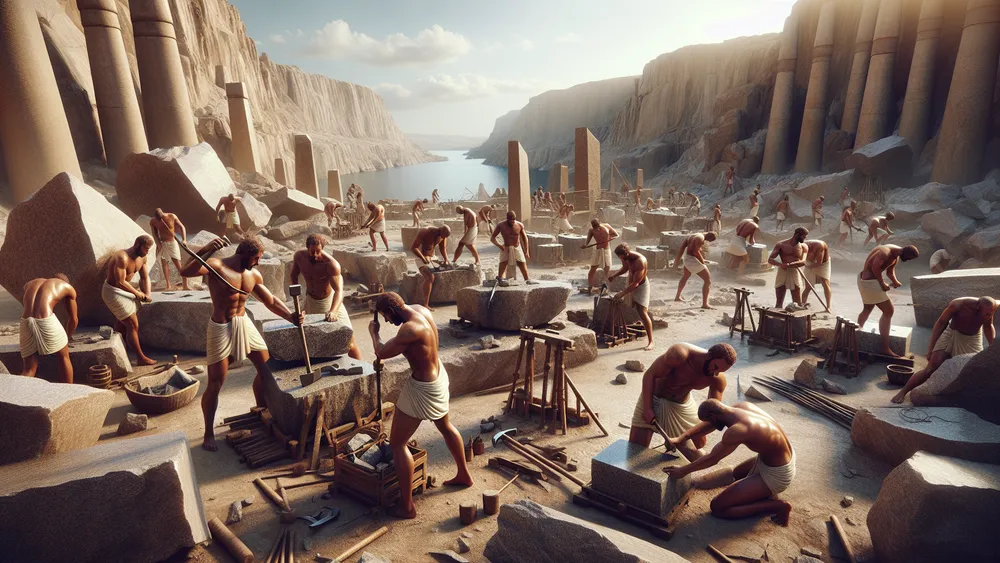
| Material | Techniques Used | Challenges Faced |
|---|---|---|
| Granite | Copper chisels, wooden wedges, stone hammers | Getting big, perfect blocks |
| Quarrying Tools | Manual work, exact measurements | Keeping the stone strong and solid |
These steps were key in setting up the ground for the amazing obelisks that would later stand as proof of ancient Egyptian cleverness and skill in making things.
Crafting Them Perfectly
Once granite blocks came out, next step was to shape and carve them into the well-known obelisk shape. It needed a lot of care and skill. Think about old workers, doing this with the same care as a jeweler. They used copper tools like chisels and saws. They also used sand to make the stone smooth. Workers had to make sure all four sides got smaller evenly to the top. This was to keep it balanced. Not just for looks, but imbalance could make it fall. Some points about the craft:

- Tools Used: Copper chisels, saws, sand.
- Precision Needed: Perfect symmetry, smooth stone surfaces.
- Skill Level: High craftsmanship, like a top sculptor.
These steps show the great craftsmanship and detail, making these not just buildings but also art pieces.
Moving and Setting Them Up
The old Egyptians’ skills at moving big obelisks were really impressive. Think about moving a huge stone pillar, weighing tons, without today’s machines. They used sledges, rollers, and a lot of people to shift these big stones from quarries to their final spots. The stone would be put on a sledge, dragged over a watery path (to make it slide easier).
When it reached the site, the obelisk was lifted upright with ramps, levers, and heavy counterweights. This needed muscle but also good teamwork and knowing physics well. Setting up an obelisk showed how smart and together the old Egyptian society was.
Moving massive obelisks in ancient Egypt required teamwork, physics knowledge, and innovative techniques like sledges and counterweights.
Famous Obelisks
First, it helps to look at how obelisks were made and set up. Now, focus on some of the well-known ones that lasted a long time.
Iconics in Egypt
First, the well-known obelisks in Karnak and Luxor temples show how great old Egypt was. For example, Karnak has a huge obelisk of Thutmose I. This marked the temple’s entrance. It shows the pharaoh’s link to the gods. Likewise, in Luxor Temple, the obelisk of Ramses II stands tall.

It’s not just a strong structure but a part of history, having been there for many events over the years. Think of these obelisks like today’s tall buildings, dominating the view, as key spots for religion and city life. These tall structures have lasted through many years and keep amazing people, showing a small look into the old Egyptian world.
Stands in Ancient Rome
To bring obelisks from Egypt to Rome needed a lot of work showing how good Romans were at using tools, determined too. Imagine moving a tall building today between continents. They used big ships and detailed systems with pulleys to move these huge stones over the Mediterranean Sea.
When they got to Rome, these obelisks went up in important public spots, showing Rome’s might and their link to Egypt’s ancient civilizations. The Vatican Obelisk, originally put in Heliopolis, now stands in St. Peter’s Square, becoming the main point of the whole Vatican City. Another example, the Lateran Obelisk, the tallest old Egyptian one still standing, ended up in Rome, now staying in Piazza San Giovanni.
These obelisks not only made Rome’s building style look grand, but also stood as lasting signs of the empire’s wide reach and mix of cultures.
Obelisks Today
First, we looked at how obelisks traveled from Egypt to Rome. Now, we look at their place and what they mean in the world today.
All Over the World
These days, obelisks exist in many places worldwide, each with its own special historical and cultural meaning. Cleopatra’s Needle in London, for instance, originally stood in Heliopolis. In the 19th century, it was moved to the River Thames. This stone connects ancient Egypt and modern Britain, showing the lasting impact of Egyptian civilization.
In a similar way, the Washington Monument in the USA, although not ancient Egyptian, was influenced by those old structures and honors the first president, George Washington. Think of these tall structures like old ambassadors, connecting different cultures and times, just as well-known spots like the Eiffel Tower or the Statue of Liberty represent their cities.
These obelisks still draw interest and inspire thoughts about the broad human history and how our world is tied together.
Keeping Them Safe
Taking care of ancient obelisks brings many problems, like damage from weather and pollution and harm that people might cause. Think about keeping a very old building always in good shape; it needs a lot of work all the time. Today, people use new technologies like laser cleaning, watching structures, and protective layers to protect these old pieces.
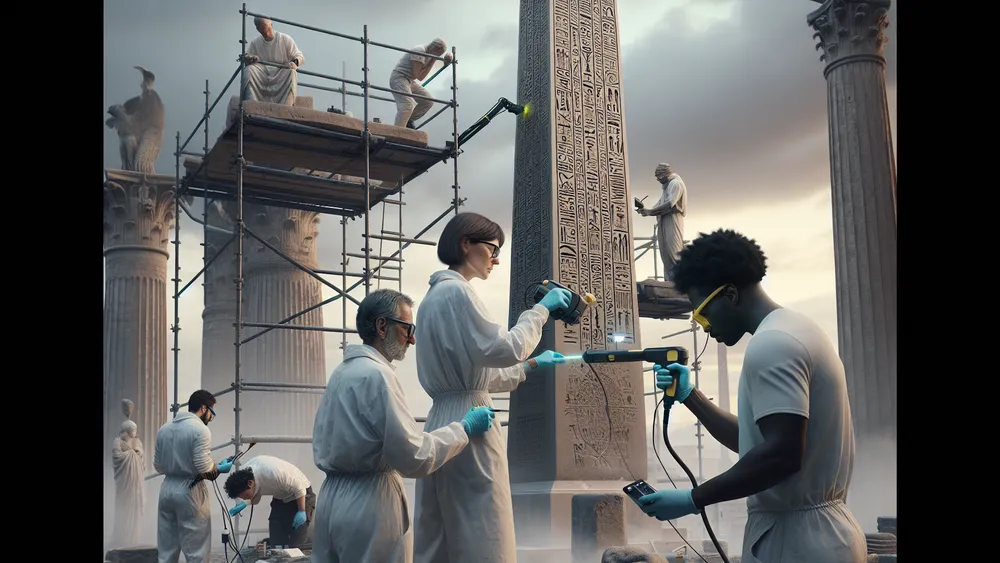
For example, the obelisks in Rome get regular work to stop them from wearing down because of city pollution and acid rain. These tasks are very important because obelisks are not just stones but very important links to history, showing off the art and skill of old cultures. By saving them, we make sure future people can keep learning from and feeling inspired by these amazing pieces of history and human skill.
FAQs
1. What is the significance of the obelisk shape?
The significance of the obelisk shape lies in its symbolic representation of a ray of sunlight, connecting it to the sun god Ra.
2. How were obelisks transported from Egypt to other countries?
Obelisks were transported from Egypt to other countries using specially designed ships and complex engineering techniques.
3. Are there any modern obelisks being constructed today?
Modern obelisks are being constructed today, often as commemorative monuments or public art installations.
4. What are some lesser-known facts about obelisks?
Some lesser-known facts about obelisks include that they were often capped with a pyramidion, which was sometimes covered in electrum to reflect the sun’s rays.

